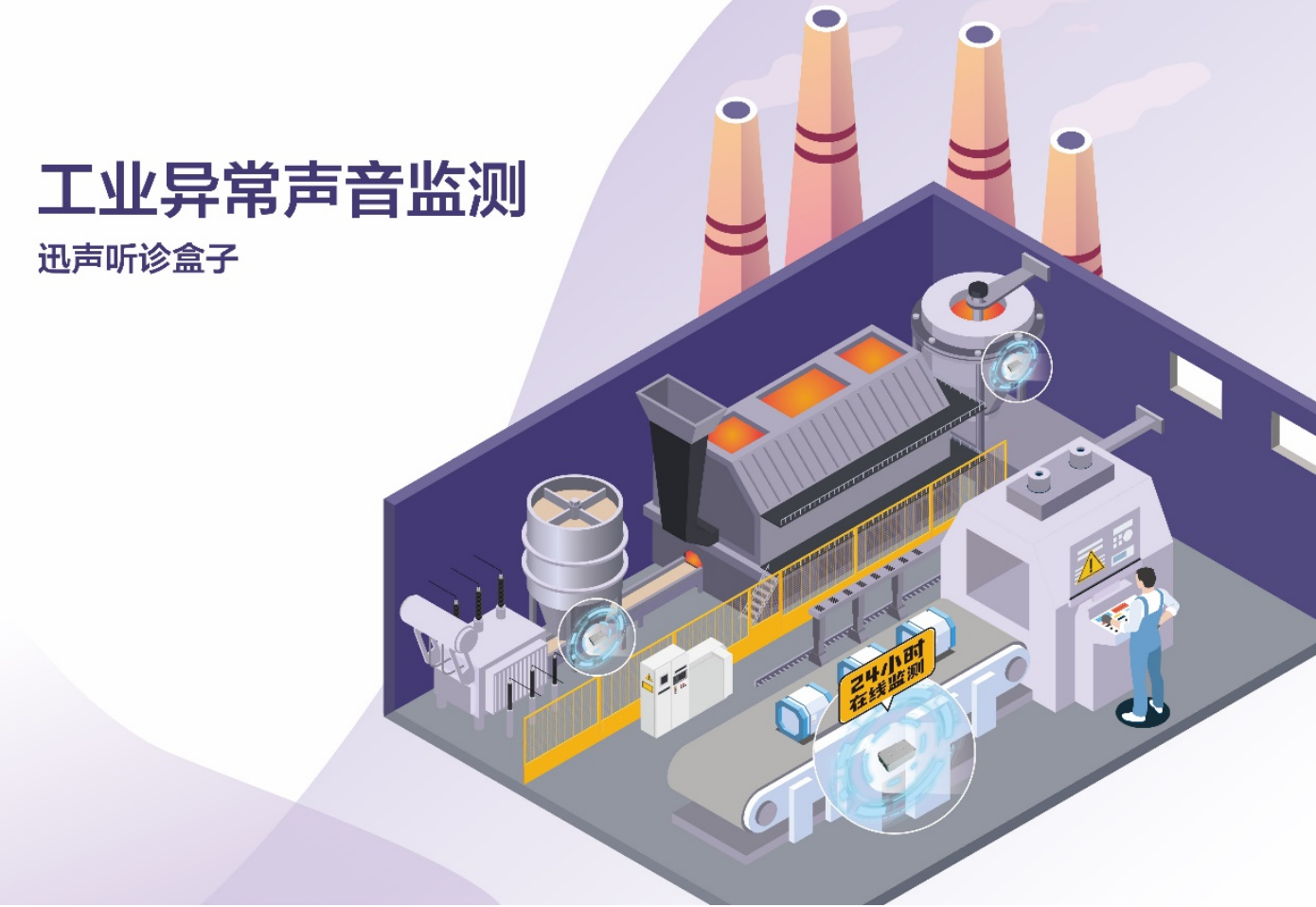Save more than 40% of operation and maintenance manpower
It was learned that “Lianfeng Xunsheng” announced that it has completed a Pre-A round of financing of tens of millions of yuan. This round of investment is led by TusStar, followed by Fangxin Capital, and the old shareholder Ying Connaught Angel Fund continues to increase. The financing funds will be mainly used to expand the product sales system and new technology research and development.
Lianfeng Xunsheng was established in Xi’an in April 2018 and received seed round investment from Inno Angel in September of the same year. It is an AIoT solution provider with machine hearing as its core, mainly engaged in environmental sound signal processing and sound Recognition, sound source localization and related acoustic software and hardware product development and services, and won the “national high-tech enterprise” certification in December 2020. After this financing, Lianfeng Xunsheng parent company will settle in Shenzhen.
According to the introduction, Lianfeng Xunsheng has established a full-stack product system of “from standardized hardware to core algorithms, from application layer to database”, and uses machine hearing technology to reduce or replace manpower in traditional acoustic monitoring scenarios. , To promote the automatic monitoring upgrade of the sound dimension
At present, Lianfeng Xunsheng has applied environmental sound analysis technology to various fields, such as coal, steel, thermal power, cement manufacturing, petroleum, national grid, nuclear energy, rail transit, product quality inspection, inspection robots, border defense, Core area security, urban noise traceability management, etc.
The research of Lianfeng Xunsheng found that in the current large-scale industrial equipment operation and maintenance, there are still a large number of scenes that rely on human ears to conduct inspections. The disadvantages such as poor reliability, low efficiency, and insecurity of personnel are unavoidable. Through machine hearing means Gradually replace manual inspections. For example, most mechanical equipment will emit steady and regular noise under normal working conditions, and when the equipment is aging or other failures occur, it will produce operating noise that is significantly different from normal. “Using the sound of equipment to determine the health of equipment” has inherent favorable conditions. The sound signal contains a wealth of information and can be used in many scenarios where vision, touch, and smell are not suitable. At the same time, the sound signal is non-contact, which can effectively avoid the difficulty of vibration signal data collection.
Based on these characteristics, Lianfeng Xunsheng has developed a variety of product solutions including Xunsheng auscultation box, “electronic sentinel” sound and vibration integrated sensor, sound ball linkage system, and illegal whistle capture system.
The Xunsheng Auscultation Box can be used in Lianfeng Xunsheng’s original distributed abnormal sound monitoring system and “point-to-point” online monitoring program. Among them, the distributed abnormal sound monitoring system is widely used in factories and mines that use belt conveyors for long distances.
Xunsheng auscultation box
The fast sound auscultation box is deployed in a non-contact manner along the belt conveyor, which can collect the working noise in real time and conduct all-weather online monitoring of the operation status of the belt conveyor. Sound recognition technology based on machine learning can automatically perform acoustic feature extraction and comparison records, perform predictive diagnosis of equipment, and timely warn of possible wear, broken shafts, peeling and other problems of rollers, and effectively solve the problems caused by roller failures. Belt deviation, tearing, material leakage, material blocking and other problems, to avoid sudden accidents and unplanned shutdowns. According to statistics, the Xunsheng auscultation box can increase the efficiency of equipment operation and maintenance by more than 50%, reduce the missed inspection rate by more than 70%, and save more than 40% of operation and maintenance manpower.
For scattered, independent, unattended, high-risk, large-volume and valuable equipment, a “point-to-point” online monitoring program is adopted. For example: power system transformers, reactors, various pumps of petrochemical systems, pipeline valve chambers, blast furnaces, cutting equipment in the steel industry, etc. By deploying the Xunsheng auscultation box near the device to collect the operating noise of the device in real time, using an unsupervised machine learning algorithm (Auto-encoder), only a few positive samples are needed to complete the voiceprint feature extraction and model training. When an abnormal sound is detected, the system will alarm in real time on the monitoring platform, and automatically store the abnormal sound data and characteristics, and provide equipment working status information within a certain period for reference.
The Xunsheng auscultation box can monitor an ultra-wide frequency range of 10Hz-80KHz, and achieve full coverage from infrasound to ultrasound.
“In the extremely complex working environment of the sound field environment, the negative samples of the equipment sound are difficult to obtain and cannot be exhaustive. Therefore, the technical advantage of machine learning with only a small number of positive samples is particularly significant, so that it can be truly realized.’ Quick deployment without engineering, and iterative upgrades can be carried out in a short time.” Xiang Bin, founder of Lianfeng Xunsheng told.
In addition to the application in the industrial production field, machine hearing technology can also be used in the security field. At present, our common smart security methods, including machine vision monitoring, radar detection, etc., have certain limitations. For example, video surveillance technology has problems such as blind spots, severe weather, day and night changes, ground fluctuations, and transmission difficulties; radar detection technology has low, small and slow targets, ground and sea clutter interference, electromagnetic interference, anti-radiation missiles, low-altitude penetration Threats such as stealth technology, high equipment cost, high power consumption, high requirements for the use environment, and long-term monitoring are difficult.
The addition of sound technology can make up for the limitations of existing security methods to a certain extent. In this regard, the Lianfeng Xunsheng team successfully launched the “electronic sentinel” sound and vibration integrated sensor in January 2021 after a long-term and extensive application experiment. The device is simple in structure, small in size, ultra-low power consumption, light in weight, easy to deploy, highly maneuverable, low in cost, and can be deployed in large areas in a distributed manner.
Functionally, “Electronic Sentry”The sound-vibration integrated sensor can realize multi-sensor coordination of sound, vibration, and infrared, multi-dimensional monitoring, and can be linked with traditional video monitoring equipment to make up for blind spots in video monitoring. At the same time, the device can realize self-organized network communication, and adopts adaptive signal detection and identification technology, passive acoustic vibration technology, has strong environmental adaptability, can be deployed on the ground or underground, and is not easy to be discovered and destroyed by electronic reconnaissance equipment .
Electronic Sentry
Based on these characteristics and advantages, “electronic sentries” are used in strategic border defense areas, high-consequence areas of oil pipelines, anti-theft excavation, core material storage, camp area security, cultural protection site security, illegal construction supervision, mobile communication base station anti-theft and anti-theft Vandalism and other inaccessible areas with higher protection levels have landing space.
In order to further optimize the urban security system based on video surveillance methods, Lianfeng Xunsheng also launched a sound ball linkage system. Relying on mature sound signal processing technology, the dome camera is upgraded to improve the ability of existing video equipment to monitor abnormal sounds. When an abnormal sound signal appears in the monitoring range, it can respond in seconds, instruct the dome camera to rotate to the direction of the abnormal sound source for viewing, and automatically store the audio and video files of the alarm period to realize 360° all-round monitoring and support docking with the superior The management system realizes the unified aggregation and upload of data. This system breaks the limitations of the existing video surveillance system that it can only view images in real time, query afterwards, and is low in intelligence. It solves the problems of large blind spots, difficulty in obtaining evidence, and inconvenience caused by the unclear monitoring direction in traditional security solutions.
Sound ball linkage system
In addition, Lianfeng Xunsheng’s technology can also be applied to urban noise traceability management, such as the monitoring of construction site noise, social life noise, airport noise, and college entrance examination noise. “According to our observations, whether it is urban area traffic noise monitoring or noise pollution source monitoring, the investment in financial, manpower, and high-tech means has been increasing year by year. Illegal whistle law enforcement assistance systems have been deployed in dozens of cities across the country., And will gradually increase at a compound growth rate of about 25% per year in the future. This is also a market opportunity for Lianfeng Xunsheng. “Xiang Bin said.
In terms of team, the company’s core technical team consists of PhDs and masters from Northwestern Polytechnical University. It is one of the few domestic teams that independently masters sonar hardware design and algorithm software development. It is in AED (Acoustic Scenes Detection) environmental sound event detection technology And ESR (Environmental Sound Recognition) has a deep accumulation in environmental sound target recognition technology. It has participated in the world’s top acoustic competition-DCASE (Detection and Classification Acoustic Scenes and Events) for several consecutive years, ranking among the top three.
About investment
Li Zhu, founding partner of Inno Angel Fund: The founding team of Lianfeng Xunsheng has a solid technical background and is a result transformation project of Northwest Polytechnical University. The team has mastered the core technology of acoustic AI application, and has in-depth research in the application of air sonar. The products can be extended to areas such as urban noise monitoring, industrial product fatigue monitoring, and unmanned area security. The market space is huge, and it has been widely implemented. The project and the founding team have a lot of room for development.
Liu Bo, general manager of TusStar: Machine hearing will play a huge role and value in many scenarios. We are very optimistic about Lianfeng Xunsheng. The team was born in Xi’an University of Technology. It is one of the few domestic talents in the high-end acoustics field with comprehensive quality, and at the same time an excellent team that is very practical and innovative. The company already has a relatively comprehensive product system with independent intellectual property rights, including the front-end air sonar array sensor structure design, and the back-end system software landing and implementation, and has clear commercial application scenarios and customer groups, which can be expanded and replicated in the future Space imagination is huge.


